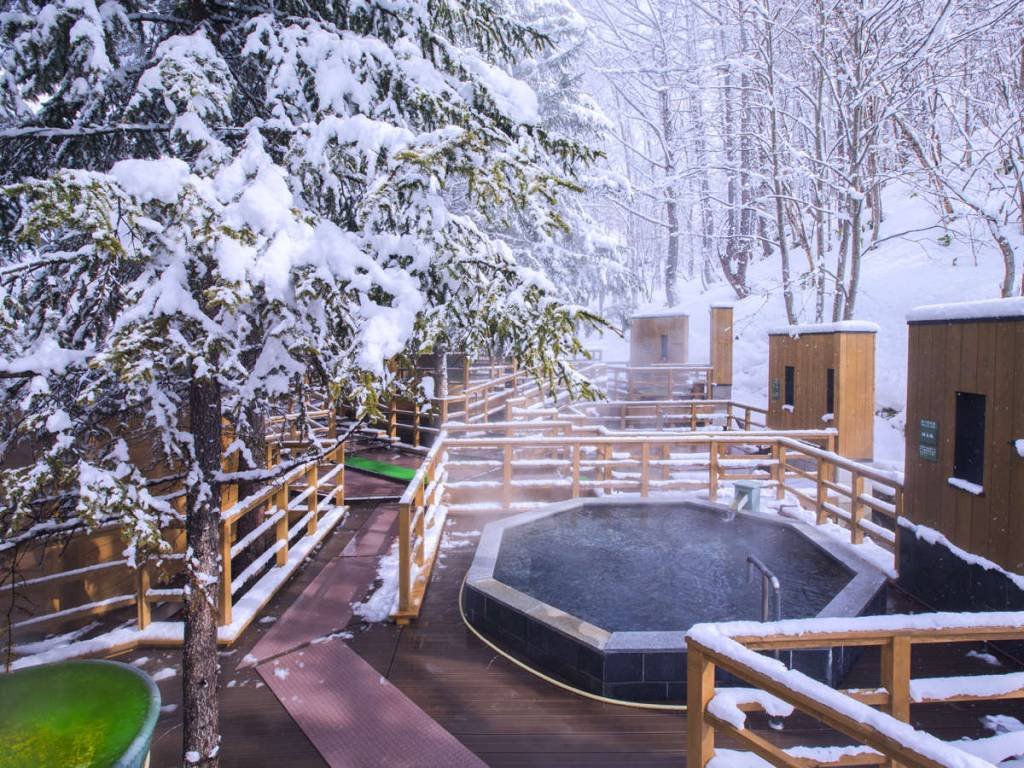Many are quick to talk about food and drinks when thinking about après ski. However, an equally important component (and likely much healthier) is giving your body and muscles much-needed relaxation and rejuvenation. In North America, people plunge into hot tubs while in Europe it is common to head to the sauna. In Japan, however, it is the onsen that people head to for a warm bath and relaxation.
What is an onsen?
An onsen is a Japanese hot spring and is the ultimate way to relax after a long day of skiing or riding down the mountains through all that powder Hokkaido has to offer.
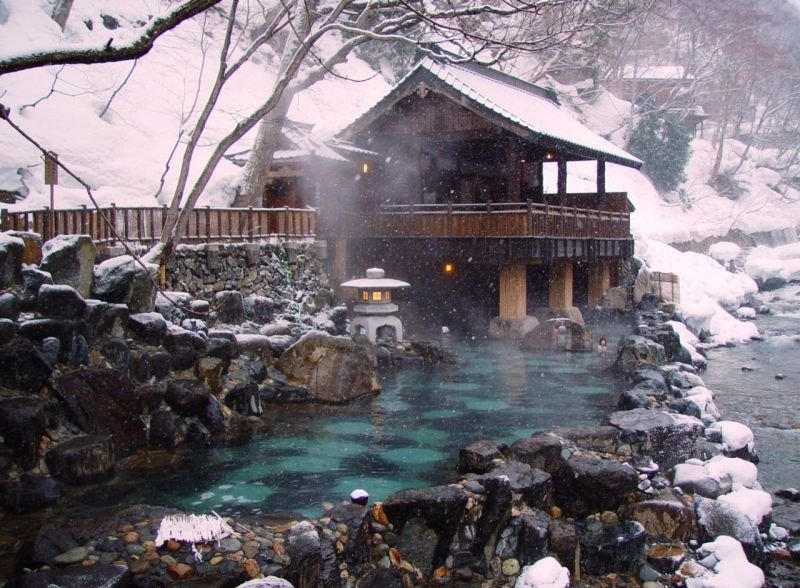
History of the onsen
If there’s one thing Japanese people love, it’s baths. You’ll notice that at most Japanese houses, the bath is separate from the shower, as people look forward to relaxing in hot water at the end of the day and soothing their stresses accumulated in everyday life. There’s even a Japanese phrase, hadaka no tsukiai (literally “naked relationship”), that refers to how interpersonal bonds are strengthened by bathing together, hiding nothing from one another.
The first instances of people bathing in onsens dates back to the 7th century, and it has become the prime form of leisure for Japanese people since. However, an onsen is not just any regular bath – bathing in an onsen has many health benefits, due to the presence of many minerals.
Many onsens (according to legend) were discovered when people saw wounded animals bathing in them to heal themselves, while samurai would use onsens to treat their battle scars. It has been scientifically proven that bathing in an onsen can help maintain good health and remedy numerous aches, injuries, and a variety of other conditions and ailments, depending on the water’s mineral composition.
As one of the most volcanically active countries in the world, there are thousands of onsens all over Japan, though the majority are found in the countryside. It’s not a stretch to say that no two onsens are the same, as each has its own unique mineral composition, charms, and specialities.
On maps, onsens are usually marked with the kanji for hot water 湯 (yu), the hiragana ゆ, or the symbol ♨, while many are also located within Japanese ryokans and hotels.
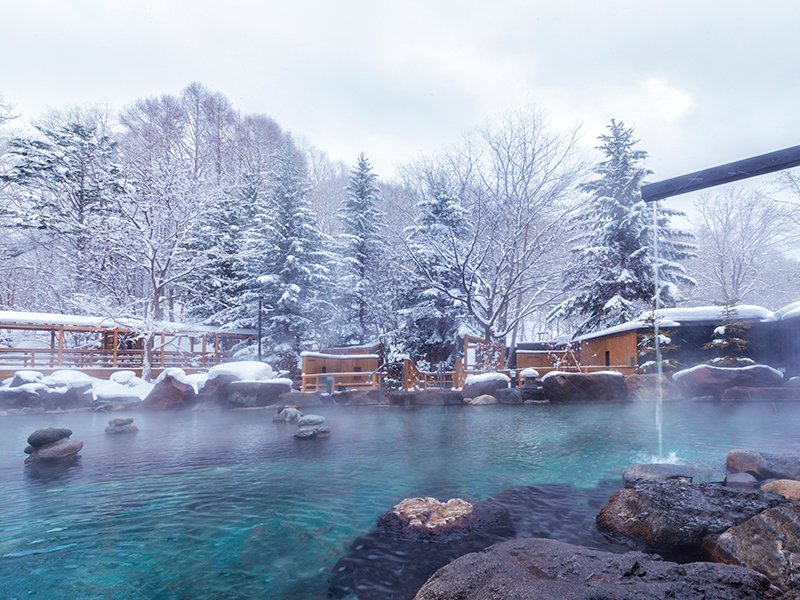
Types of Onsen
There are several types of onsens, all of which provide mental and physical relaxation to those taking a bath. Onsens are classified according to their mineral composition: sulphur hot springs are common in the mountain regions, hydrogen carbonate hot springs are characterized by fine bubbles forming on the bathers’ skin, and iron hot springs are unmistakable with their rust-coloured water.
Onsens are run by the municipality or privately as part of a hotel, bed and breakfast, or ryokan. They can be indoor or outdoor baths, the latter known as roten-buro. Note that onsens use water from geothermal springs whereas indoor public bath houses, called sento, use heated tap water (sento are much more common in large cities).
Most onsens have segregated baths for men and women. Mixed-gender onsens, called konyoku, do exist but are generally found only in rural areas of Japan and are even banned in some places.
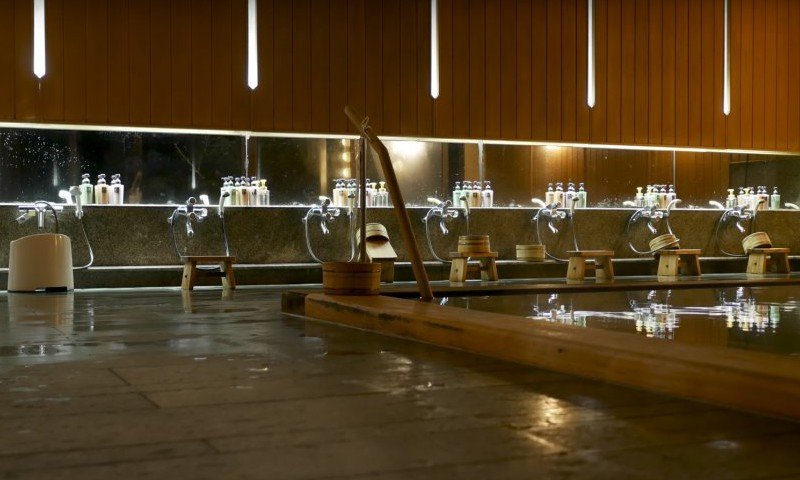
How to bathe in an onsen
- Enter the proper changing room and bath — those for men usually have a navy curtain and are denoted with the character 男 (otoko), while those for women have a red curtain with the character 女 (onna).
- Remove all clothing and accessories in the changing area and put them in one of the baskets or lockers.
- Enter the bathing area but only bring your hand towel with you. Taking the hand towel is up to you, as you will notice many people enter the bathing area without one.
- Almost all showers are equipped with a stool and bucket. Sit down on a stool and grab a bucket. Don’t shower or bathe while standing as you could splash water and soap onto other bathers. Wash your body thoroughly with soap. You may use the hand towel to wash yourself if you brought it with you. Rinse and wring the hand towel when finished.
- Enter the onsen carefully; onsen are usually 40–44 degrees Celsius. Slowly enter the bath, starting from your feet and knees, and gradually working your way up to your shoulders. If you have a hand towel, this should not go in the water. You will see others with the towel on their heads and you can follow their lead, or place it to the side.
- Enjoy and relax in the onsen. Bathe for about 5~10 minutes before sitting on the rim of the bath to rest, and repeat this two or three times; bathing more than 30 minutes total may be dangerous.
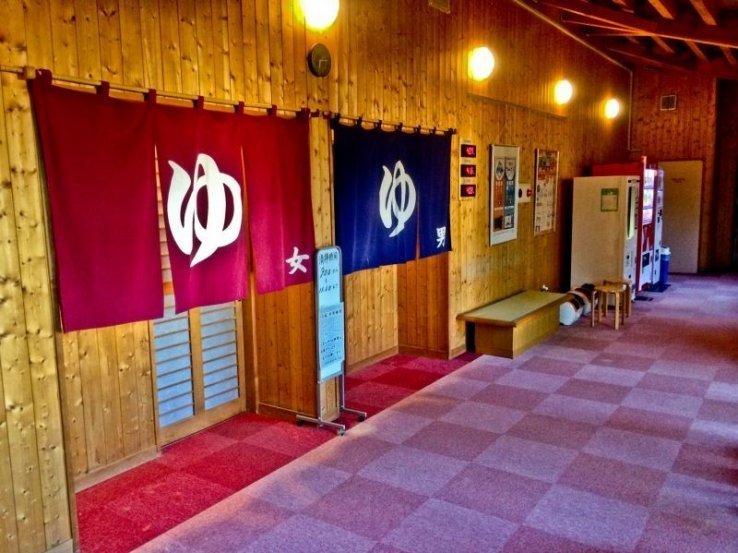
Tips for the onsen
Before bathing:
- Many onsen provide rental body and hand towels for a fee of around 300 to 500 yen, although you are free to bring your own.
- Many (but not all) ryokans and hotels open their onsen to the general public, usually for a fee — just because you aren’t staying there, it doesn’t necessarily mean you can’t use their onsen.
- Go to the bathroom beforehand; most changing rooms do not have a toilet.
- It is recommended that you drink some water beforehand to prevent dehydration.
- While some onsen have relaxed the restrictions, as a general rule if you have a tattoo you are either required to cover it or are prohibited from using the bath altogether. In Japan, tattoos are associated with the Japanese mafia (yakuza).
While bathing:
- Showering before bathing is a must – the bath itself is meant for relaxing, not washing.
- Watch your step while walking; the floor can tend to get slippery due to the onsen water’s minerals.
- Do not put anything other than yourself in the water; place your hand towel on your head or to the side. If it accidentally falls into the bath, be sure to wring it dry outside the bath.
- You are allowed to cover up with the hand towel for modesty before entering the bath.
- Diving, splashing, and swimming in the bath is prohibited.
After bathing:
- In addition to soap and shampoo, most onsen have amenities such as combs and hair dryers in the changing rooms.
- It is encouraged that you drink water, tea, or a sports drink after bathing, in order to avoid dehydration.
